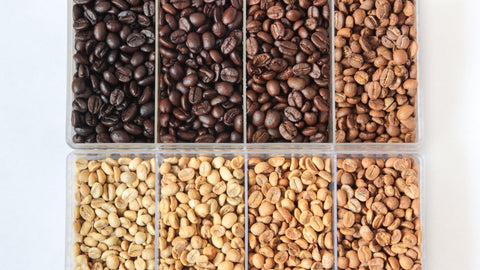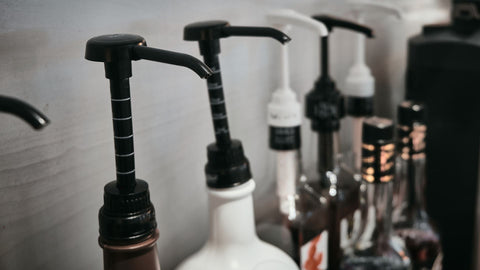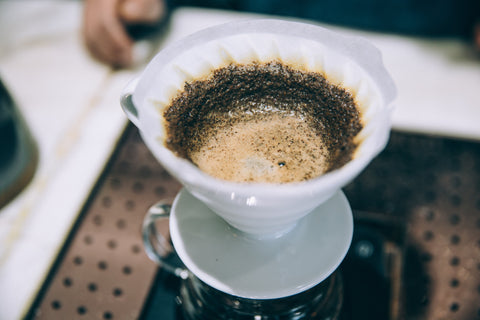Introduction: Understanding Coffee Roast Levels
The journey from green coffee bean to your morning cup is a transformative process, and roasting is where the magic happens. Coffee roast levels dramatically impact flavor, aroma, body, and acidity—turning the same bean into completely different taste experiences.
Whether you're drawn to bright, fruity light roasts or bold, chocolatey dark roasts, understanding roast levels empowers you to choose coffee that perfectly matches your preferences. In this comprehensive guide, we'll explore how temperature and time create distinct roast profiles, decode industry terminology, and help you discover your ideal cup.
What Are Coffee Roast Levels?
Coffee roast levels refer to the degree to which green coffee beans are roasted, determined primarily by roasting temperature and duration. Raw coffee beans start as green, hard seeds with grassy flavors. Through roasting, these beans transform into the aromatic, flavorful coffee we know and love.
Roast levels are typically categorized into three main types:
- Light Roast: Preserves origin characteristics and natural flavors
- Medium Roast: Balances origin flavors with roast-developed sweetness
- Dark Roast: Emphasizes bold, roast-forward flavors with low acidity
Each roast level creates a unique sensory experience by altering the chemical composition of the bean, affecting everything from acidity to body to flavor notes.
The Science Behind Coffee Roasting
The Roasting Process
Coffee roasting is a carefully controlled application of heat that triggers chemical reactions within the bean:
- Drying Phase (up to 300°F): Moisture evaporates from green beans
- Browning Phase (300-400°F): Maillard reaction begins, creating complex flavors
- First Crack (around 385-410°F): Beans audibly crack and expand as pressure builds
- Development Phase (410°F+): Flavor profiles develop based on time and temperature
- Second Crack (around 435-450°F): Oils emerge, darker roasts develop
How Temperature Affects Flavor
Lower roasting temperatures and shorter times preserve the bean's inherent characteristics its terroir, or the unique flavor imparted by soil, climate, and elevation. Higher temperatures and longer roast times develop sugars into caramelized notes while reducing acidity, eventually allowing roast-forward flavors to dominate over origin characteristics.
Light Roast Coffee: Bright and Complex
Flavor Profile and Characteristics
Taste Notes: Bright acidity, floral notes, fruity flavors, tea-like body, citrus undertones
Visual Appearance: Light brown color, dry surface with no visible oils, uneven color possible
Aroma: Floral, fruity, sometimes grassy or grain-like
Body: Light to medium body, tea-like texture
Roasting Temperature and Names
Light roast coffee is roasted between 356°F and 401°F, typically stopping just after first crack. Common names include:
- Cinnamon Roast
- New England Roast
- Light City Roast
- Half City Roast
Best Brewing Methods for Light Roast
Light roasts shine with brewing methods that highlight their delicate, nuanced flavors:
- Pour-over: Emphasizes clarity and bright notes
- Aeropress: Highlights sweetness and reduces bitterness
- Drip coffee: Convenient for daily brewing
- Cold brew: Smooth, sweet, less acidic
Who Should Choose Light Roast?
Light roast is ideal for coffee enthusiasts who appreciate:
- Origin-specific flavors and terroir
- Bright, vibrant acidity
- Complex, layered taste profiles
- Fruity and floral notes
- Single-origin coffee experiences
Try Our Light Roast: Ethiopia Natural - Medium Light Roast Tasting Notes: Milk chocolate, Fruity, Caramel
Medium Roast Coffee: The Perfect Balance
Flavor Profile and Characteristics
Taste Notes: Balanced acidity, caramel sweetness, nutty undertones, brown sugar, moderate body
Visual Appearance: Medium brown, slight sheen but minimal oils, even coloration
Aroma: Sweet, balanced, caramel and nutty notes
Body: Medium body with smooth mouthfeel
Roasting Temperature and Names
Medium roast coffee is roasted between 410°F and 428°F, typically developed past first crack but before second crack. Common names include:
- City Roast
- American Roast
- Breakfast Roast
- Regular Roast
Best Brewing Methods for Medium Roast
Medium roasts are versatile and work well with virtually any brewing method:
- Drip coffee: Classic, everyday brewing
- French press: Highlights body and sweetness
- Espresso: Well-rounded shots with crema
- Pour-over: Shows balance of flavors
- Cold brew: Smooth with chocolate notes
Who Should Choose Medium Roast?
Medium roast appeals to coffee drinkers who want:
- Balanced flavor without extreme brightness or boldness
- Sweetness and body without losing origin character
- Versatility across brewing methods
- Approachable, crowd-pleasing coffee
- The perfect daily drinker
Try Our Medium Roast: Breakfast Boost House Blend - Medium Roast Tasting Notes: Fruity, Brown Sugar, Dark Chocolate, Caramel, Smooth Body
Dark Roast Coffee: Bold and Full-Bodied
Flavor Profile and Characteristics
Taste Notes: Low acidity, bold body, chocolatey, smoky, caramelized sugars, sometimes spicy
Visual Appearance: Dark brown to almost black, glossy surface from visible oils
Aroma: Rich, roasted, chocolatey, sometimes smoky
Body: Full, heavy body with lingering finish
Roasting Temperature and Names
Dark roast coffee is roasted between 437°F and 482°F, well into or past second crack. Common names include:
- French Roast
- Italian Roast
- Espresso Roast
- Continental Roast
- Spanish Roast
Best Brewing Methods for Dark Roast
Dark roasts excel in brewing methods that showcase body and richness:
- Espresso: Classic choice for bold shots
- French press: Full extraction, heavy body
- Moka Pot: Strong, concentrated brew
- Cold brew: Less bitter than hot brewing
- Turkish coffee: Traditional, full-bodied preparation
Who Should Choose Dark Roast?
Dark roast is perfect for those who prefer:
- Bold, assertive flavors
- Low acidity for sensitive stomachs
- Chocolate and smoky notes
- Strong coffee with milk or cream
- Full-bodied, rich mouthfeel
Try Our Dark Roast: Bali Blue Single Origin - Medium Roast Tasting Notes: Dark Chocolate, Molasses, Brown Sugar
SCAA Roast Levels: Industry Standard Classification
The Specialty Coffee Association of America (SCAA) established standardized roast classifications using the Agtron Gourmet Scale, which measures roast darkness through infrared reflectance.
Understanding the Agtron Scale
| Agtron Number | SCAA Classification | Description |
|---|---|---|
| 85-95 | Light Roast | Bright, acidic, preserves origin flavors |
| 75-85 | Medium-Light Roast | Balanced acidity with developing sweetness |
| 65-75 | Medium Roast | Sweet, balanced, moderate body |
| 55-65 | Medium-Dark Roast | Caramelized, lower acidity, fuller body |
| 45-55 | Dark Roast | Bold, low acid, roast-forward flavors |
| 35-45 | Very Dark Roast | Smoky, bitter, full loss of terroir |
Why Roast Level Standardization Matters
Before the Agtron scale, roast terminology was inconsistent across roasters. One company's "medium" might be another's "dark." The SCAA classification provides:
- Consistency for consumers shopping across brands
- Quality control for roasters maintaining flavor profiles
- Clear communication about what to expect in the cup
The Terroir Question
Specialty coffee roasters emphasize that roasting beyond certain darkness levels (typically below 55 on the Agtron scale) means loss of terroir—the unique characteristics imparted by origin, elevation, soil, and processing. At this point, roast flavors dominate over the bean's inherent qualities.
How to Choose the Right Roast Level
Match Roast to Your Taste Preferences
Choose Light Roast if you enjoy:
- Bright, vibrant acidity
- Fruity and floral flavors
- Complex, layered profiles
- Tea-like, delicate body
- Exploring single-origin coffees
Choose Medium Roast if you prefer:
- Balanced sweetness and acidity
- Caramel and nutty flavors
- Smooth, approachable coffee
- Versatile, everyday drinking
- Well-rounded flavor profiles
Choose Dark Roast if you love:
- Bold, assertive flavors
- Low acidity
- Chocolate and smoky notes
- Full, heavy body
- Strong coffee with additives
Consider Your Brewing Method
Different brewing methods highlight different roast characteristics:
- Pour-Over and drip: Light to medium roasts showcase clarity
- French Press: Medium to dark roasts benefit from full immersion
- Espresso : Medium to dark roasts create balanced shots
- Cold brew: Any roast works; light offers brightness, dark offers smoothness
Experiment with Freshness
Coffee is best consumed within 2-4 weeks of roasting. Freshly roasted beans reveal the true character of their roast level, while stale coffee can taste flat regardless of roast.
Regional Considerations
Origin often pairs naturally with certain roast levels:
- Ethiopian and Kenyan beans: Shine in light to medium roasts
- Colombian and Brazilian beans: Versatile across all roasts
- Sumatran and Indonesian beans: Often preferred in medium-dark to dark roasts
Roast Level and Brewing Methods: A Complete Guide
Optimal Roast Levels by Brewing Method
Pour-Over (Chemex, V60, Kalita Wave)
- Best: Light to Medium Roast
- Why: Highlights acidity, clarity, and origin characteristics
- Best: Medium to Dark Roast
- Why: Full immersion extracts body and oils
- Best: Medium to Medium-Dark Roast
- Why: Balances sweetness, body, and crema
Cold Brew
- Best: Any roast, often Medium to Dark
- Why: Long extraction reduces bitterness; dark roasts stay smooth
- Best: Light to Medium Roast
- Why: Versatile method highlights clean flavors
- Best: Dark Roast
- Why: Concentrated brewing matches bold flavors
Common Questions About Coffee Roast Levels
Does Dark Roast Have More Caffeine?
No. Light roasts actually contain slightly more caffeine per bean because less is burned off during roasting. However, when measured by volume (scoops), dark roast may have marginally more caffeine because the beans are less dense and you fit more into a scoop.
Does Roast Level Affect Acidity?
Yes. Lighter roasts retain more natural acids, creating bright, vibrant flavors. Darker roasts break down acids during extended roasting, resulting in lower acidity and smoother, bolder taste.
Why Are Dark Roasts Oily?
Oils naturally present in coffee beans migrate to the surface during extended roasting at high temperatures. This is normal for dark roasts but can indicate staleness in lighter roasts.
Which Roast Is Healthiest?
Light roasts may contain slightly higher levels of antioxidants and chlorogenic acid, which are reduced during longer roasting. However, all coffee roasts offer health benefits when consumed in moderation.
Can I Use the Same Grind Size for All Roasts?
Generally yes, but dark roasts are more brittle and may grind finer than light roasts at the same grinder setting. Adjust as needed for optimal extraction.
Final Thoughts: Finding Your Perfect Roast
Understanding coffee roast levels transforms how you experience and enjoy coffee. Whether you're drawn to the bright complexity of light roasts, the balanced sweetness of medium roasts, or the bold richness of dark roasts, there's no "best" roast—only the one that suits your palate.
We encourage experimentation. Try the same origin at different roast levels to understand how roasting impacts flavor. Explore brewing methods that complement each roast's strengths. Most importantly, choose freshly roasted, high-quality beans that allow you to taste the full spectrum of what coffee can offer.
Shop Our Full Range of Roast Levels
At Everyday People Coffee & Tea, we offer carefully roasted coffee across all roast levels, from bright single-origins to bold house blends. Every bag is roasted fresh to order, ensuring you experience coffee at its peak flavor.
Explore our collection and discover your perfect roast today.



